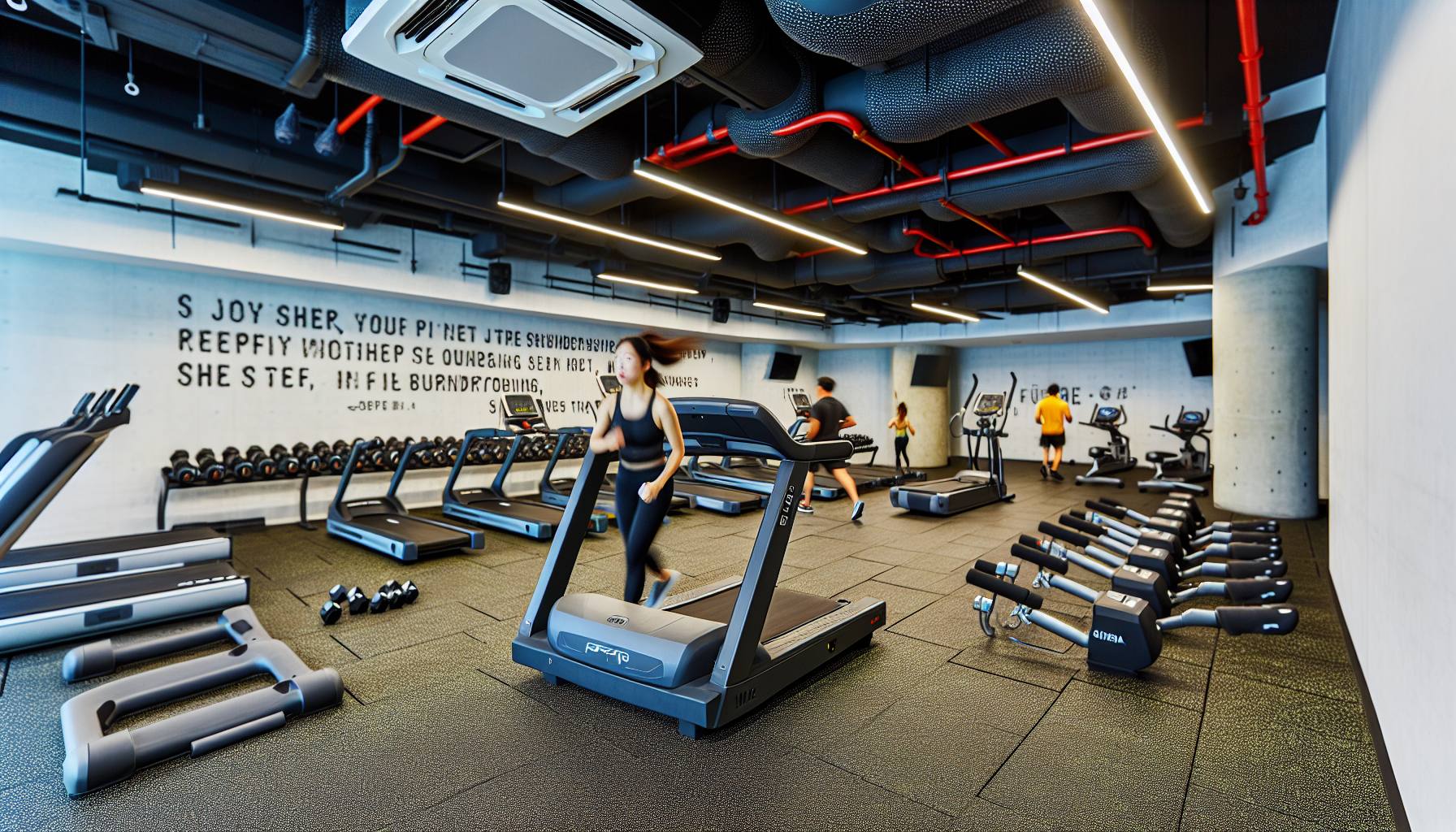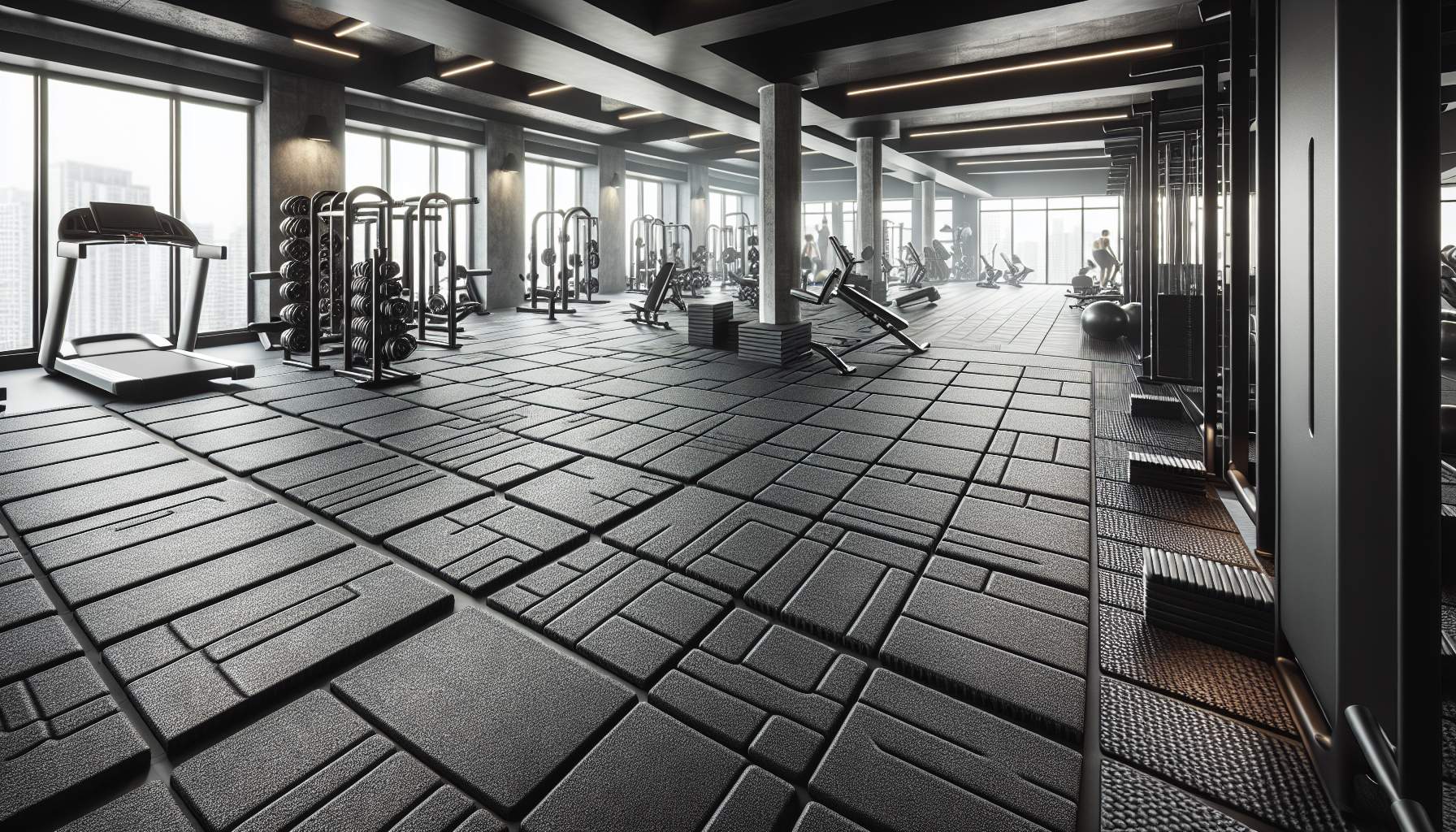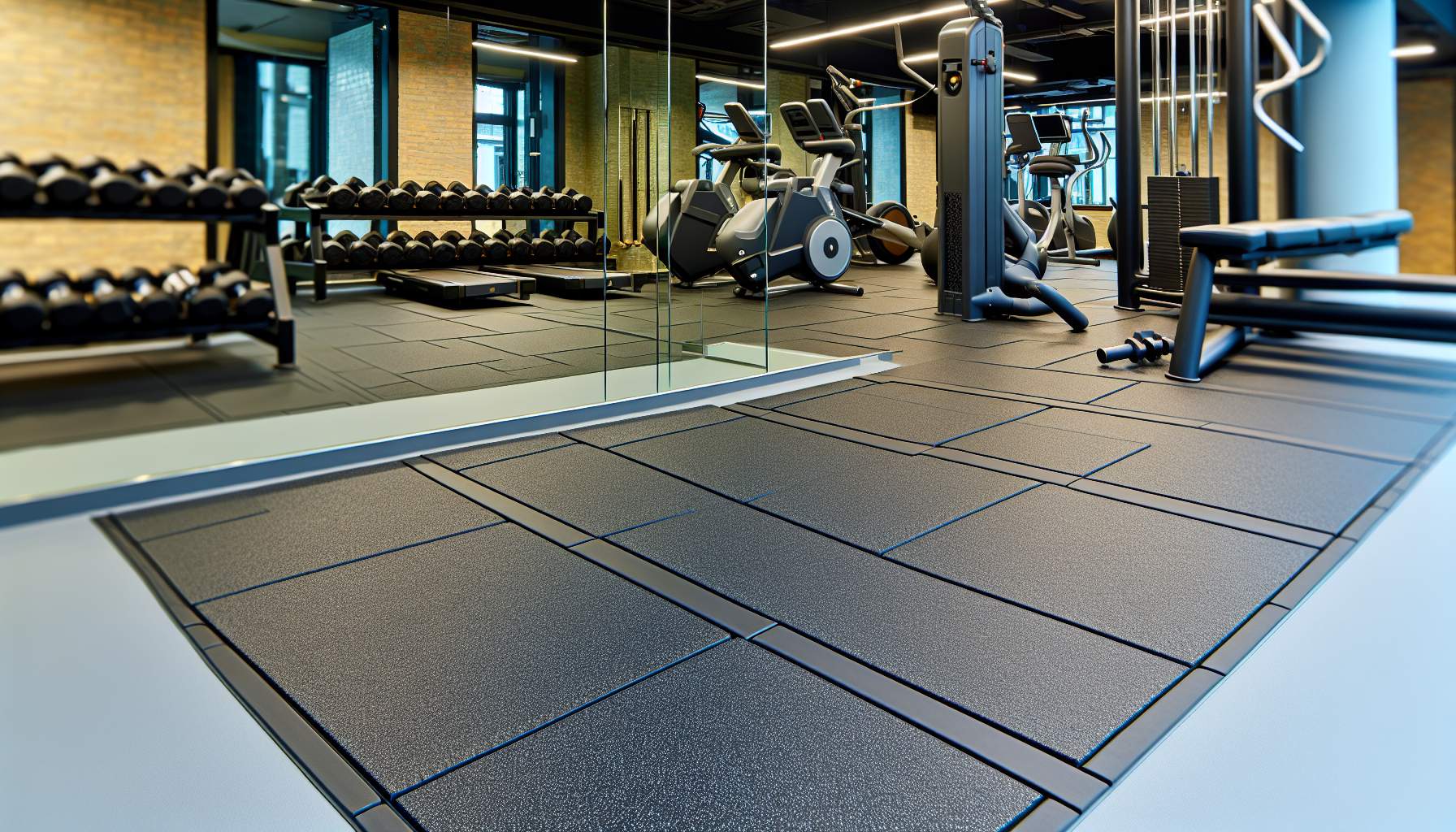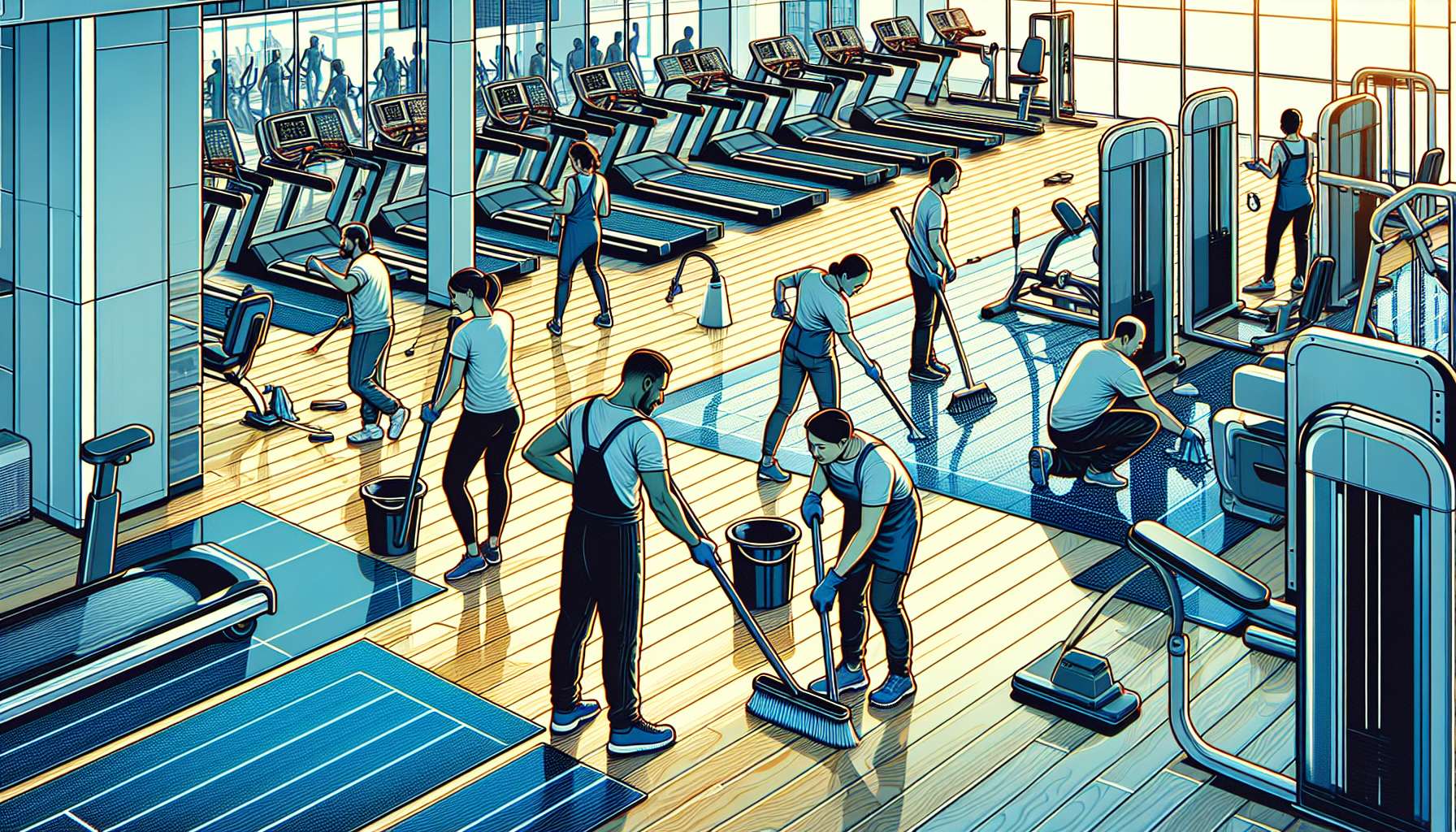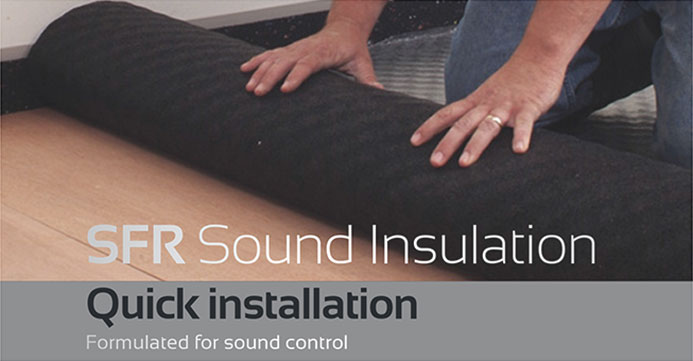Reducing noise in your gym is crucial for focus and comfort. This article cuts through the confusion to provide you with soundproof gym flooring solutions that work. You’ll learn about the properties of rubber flooring, installation tips, and how to choose materials that dampen noise without sacrificing style or quality.
👉Also read: Elevating Environments with SFR Sound Reducer: Versatile Soundproofing Solutions for Floors
The Essentials of Soundproof Gym Flooring
Soundproofing is an essential aspect of gym flooring. Whether in commercial gyms or home gyms, proper flooring can significantly reduce noise from heavy foot traffic and weight-related activities. This is particularly important in mixed-use buildings where noise could disturb neighbors or other occupants. Rubber flooring is an effective solution, capable of reducing noise and vibrations across diverse workout activities, from heavy weightlifting to high-intensity interval training (HIIT) workouts.
The right rubber flooring not only reduces noise but also enhances the durability and safety of your workout space. Whether it’s in the form of tiles or mats, high-quality rubber flooring offers a combination of sound absorption and resilience, making it a preferred choice for both home and commercial gyms.
The Science Behind Noise Reduction
You might wonder, how does rubber flooring dampen sound effectively? The secret lies in its unique properties. Rubber is recognized as a superior material for soundproofing, thanks to its ability to absorb and dampen sound effectively. The sound insulation properties of rubber flooring improve with increased thickness and the use of a dense wear layer combined with a cushioned base.
These properties are measured by the Impact Insulation Class (IIC) and Sound Transmission Class (STC), with higher ratings indicating more effective soundproofing. And it’s not just about thickness; incorporating mass into the flooring design helps prevent sound waves from escaping, thus reducing sound transmission between floors.
Comparing Sound Absorption Levels
When it comes to sound absorption, not all rubber flooring options are created equal. Factors like density and composition play a significant role in determining their soundproofing capabilities. For example, rubber flooring options with higher density are known to have enhanced sound absorption capabilities, which is crucial for effective soundproofing in gym environments.
High-density, compression-molded rubber flooring, often in the form of interlocking tiles, is structured to optimally dampen sound vibrations. A waffle bottom design further improves acoustic properties by trapping sound waves. Additionally, the fine-grained composition of rubber flooring and air cavities within the material can disrupt the path of sound waves, enhancing soundproofing. And the good news? These high-performance flooring options also come in various designs, offering aesthetic appeal without compromising acoustic performance.
Installation Tips for Maximum Soundproofing
Now that you’re familiar with the benefits and properties of rubber flooring, let’s talk about installation. Maximizing soundproofing capabilities also depends on how your rubber flooring is installed. For instance, using a thick underlay beneath rubber flooring can enhance soundproofing capabilities and extend the flooring’s lifespan.
Interlocking rubber tiles simplify the installation process and may not require professional help, potentially reducing labor costs. For a custom fit around gym equipment and irregular spaces, loose-lay rubber tiles can be trimmed on-site, which helps maintain a cohesive look and optimal soundproofing.
The Best Rubber Flooring Materials for a Quiet Workout
When it comes to achieving a quiet workout environment, the material of your gym flooring is crucial. Rubber flooring, for instance, is essential for noise reduction in gym environments, providing a quiet workout space. Specific options like rubber weight room mats are designed to suppress vibrations and reduce noise around gym equipment and during drills.
Whether you’re setting up a home gym or managing a commercial fitness center, investing in high-quality rubber flooring can significantly enhance your workout experience. Here are some benefits of using rubber flooring in your gym:
- Suppresses noise
- Absorbs shock
- Provides traction and stability
- Easy to clean and maintain
- Durable and long-lasting
The right rubber flooring, including rubber floor mats, can transform your gym into a sanctuary of comfort, productivity, and easy access.
Recycled vs. Virgin Rubber Options
When selecting rubber flooring, you’ll likely encounter two main types: recycled and virgin rubber. Both types offer effective sound insulation, but they differ in a few key aspects. Recycled rubber flooring, for example, is environmentally friendly as it utilizes recycled materials, reducing waste and curbing the need for new rubber production.
On the other hand, there are some differences between virgin rubber flooring and recycled rubber flooring:
- Virgin rubber flooring, made from pure natural rubber, tends to offer better sound absorption consistency compared to recycled rubber.
- Recycled rubber flooring is favored for high-impact activities due to its shock-absorption qualities that mitigate stress on joints.
- Virgin rubber guarantees no additives or latex, enhancing its performance and durability.
Durability Meets Functionality
The value of rubber flooring goes beyond soundproofing. Its exceptional durability and functionality make it ideal for gym environments. Designed for extreme durability, rubber floors can withstand heavy workouts and high-traffic areas in commercial gyms.
Vulcanized rubber flooring, known for its dense, ultra-durable, and non-porous surface, is ideal for gym environments. Moreover, high-quality rubber gym flooring is often backed by extensive warranties, some reaching up to 15 years, evidencing its long-term durability. These characteristics not only ensure a quiet workout but also provide a long-lasting investment that can withstand the demands of a busy gym environment.
Low Odor Solutions for Indoor Air Quality
Another important consideration when choosing rubber gym flooring is odor. Certain types of rubber flooring, such as virgin rubber, have a significantly milder scent compared to non-vulcanized rubber, making them more suitable for those sensitive to odors.
Several manufacturers have developed proprietary rubber materials that are virtually odorless, meeting the demand for low-odor gym flooring solutions. These options often come with certifications for low chemical emissions, supporting better indoor air quality. These low-odor solutions not only enhance the appeal for those prioritizing sustainability alongside air quality but also contribute to a more comfortable and pleasant workout environment.
Designing Your Space with Soundproof Gym Flooring
Designing your space with soundproof gym flooring goes beyond simply laying down rubber mats or tiles. It’s about creating a holistic workout environment that caters to diverse workout activities, matches the intensity of workouts, and complements aesthetic preferences. The versatility of rubber flooring allows for such customization, offering solutions like cork-infused rubber flooring and modular grid-loc vinyl tiles that provide both soundproofing and visual appeal.
To effectively invest in soundproof gym flooring, it’s important to prioritize areas of the gym that face heavy traffic and high impact. This targeted approach ensures that you reap the maximum benefits of soundproofing where it matters most, thereby enhancing the comfort and usability of your gym space.
Customizing for Your Equipment Needs
Customizing your gym flooring based on your equipment needs is a key aspect of effective soundproofing. Tailored rubber flooring ensures optimum fit around gym equipment, enhancing soundproofing effectiveness and safety.
Custom-cut mat and roll products, along with interlocking rubber tiles, can be configured to match the specific layout of a home gym. Rubber flooring can be precisely die-cut to snugly fit around stationary bikes, weight racks, and free weights, minimizing movement and noise during workouts.
Plus, multi-functional rubber tiles with an artificial turf layer can accommodate various exercises, improving soundproofing while saving the cost of additional flooring types.
Matching Thickness to Workout Intensity
The thickness of your rubber gym flooring should match the intensity of your workouts. For high-impact activities like plyometrics, a minimum of ½ inch thickness is recommended to provide sufficient shock absorption.
For areas with heavy equipment and bumper plates, 2- to 2.5-inch thick sound-deadening mats are recommended for effective noise reduction. Thicker rubber flooring offers superior sound and shock absorption suitable for weightlifting areas. Thicker rubber flooring typically has better sound absorption properties, establishing a greater barrier against noise.
Selecting the proper thickness is crucial to prevent floor damage and injuries, and cheap options may not provide adequate protection.
Aesthetic Choices That Complement Soundproofing
Soundproofing doesn’t have to come at the expense of aesthetics. Many rubber flooring options offer a visual appeal that complements their soundproofing capabilities. Rubber mats and tiles with color flecks not only enhance the visual aesthetic of the gym but also contribute to the material’s density and sound absorption properties.
Textured patterns in rubber flooring, such as diamond plate and ribbed designs, offer not just improved sound-dampening effects but also add distinct aesthetic characteristics to the gym. Virgin rubber flooring, known for its smoother and more uniform appearance, provides an aesthetically pleasing option for gym owners who value visual uniformity in their workout spaces.
Maintaining Your Soundproof Gym Flooring
Maintaining your soundproof gym flooring is just as important as its installation. Regular maintenance not only keeps your flooring in top shape but also extends its lifespan. Simple practices like using a pH-neutral cleaner mixed with warm water can deep clean your rubber gym flooring without damaging the material.
It’s also important to avoid soaking the rubber gym floor excessively during mopping to prevent water from seeping through seams and damaging the subfloor. After cleaning, allowing the rubber gym floors to air dry ensures a streak-free finish. For set-in stains, perform spot cleaning by scrubbing with a soft-bristled brush.
Easy Clean Solutions for Busy Gyms
Busy gyms require efficient cleaning solutions that can keep up with the pace. Regular cleaning of rubber gym flooring should be done using a broom or a vacuum without a beater brush to prevent scratching the surface.
For larger or heavily used gym spaces, an automatic floor scrubber or buffing machine with a soft attachment can effectively clean without damaging the rubber material. Also, it’s important to avoid abrasive cleaning tools like scouring pads and harsh solvents, which can scratch and degrade rubber flooring over time.
With these easy clean solutions, maintaining your gym flooring becomes a breeze.
👉Also read: 5 Tips For Maintaining Gym Flooring
Repair and Replacement Practices
Like any other part of your gym, your rubber flooring will eventually show signs of wear and tear. Regular assessment and proactive repair or replacement of damaged flooring extend its lifespan and can be cost-effective by reducing long-term maintenance costs.
For minor cuts and tears, follow these steps to repair your mat:
- Clean the damaged area.
- Buff the tear with a wire brush.
- Apply super bonder glue.
- Secure a strip of repair rubber over the tear, ensuring the mat lays flat after repair.
- Place a heavy object like a brick on the repaired section for 10-15 minutes to help the repair bond correctly and prevent tripping hazards.
Balancing Budget and Performance
When selecting gym flooring, it’s important to balance your budget with performance expectations. While cheaper initial investments like foam and vinyl can lead to elevated costs over time due to their lesser durability, investing in durable materials like rubber can be more cost-effective in the long run.
To save on initial flooring costs without compromising quality, consider buying in bulk, taking advantage of sales, or opting for recycled materials. These strategies can help you balance your budget while ensuring you get the best performance from your gym flooring.
Investing in Longevity
Investing in the longevity of your gym flooring can lead to significant long-term savings. Durable materials like high-quality rubber gym flooring, due to their longer lifespan and reduced need for repairs, can be more cost-effective in the long run.
Longevity in gym flooring is often guaranteed by warranties, showcasing a manufacturer’s confidence in the product’s durability. Investing in regular maintenance and choosing gym flooring with longer warranties can extend the lifespan of the flooring and avoid frequent repairs, leading to long-term savings.
👉Also read: 7 FAQ’s About Workout Floor Mats
Experience Unmatched Quality with SFR Sound Insulation for Your Gym Flooring
If you want to make the most of your workout environment with top-quality soundproof gym flooring, consider Specialized Fitness Resources’ SFR Sound Insulation. This innovative flooring solution combines exceptional soundproofing capabilities with durability and aesthetic appeal, ensuring a quiet and comfortable workout environment.
Don’t just settle for any gym flooring – choose SFR Sound Insulation for a superior workout experience.
Frequently Asked Questions
How do you soundproof a gym floor?
To soundproof a gym floor, install acoustic underlayment beneath the flooring to absorb vibrations and reduce impact noise. This helps prevent excessive noise and minimize wear and tear on the floor.
Do gym mats absorb sound?
Yes, gym rubber mats help absorb sound and minimize vibration when placed between the exercise equipment and the floor. This can help reduce noise disturbances in a gym setting.
What is noise-friendly flooring?
Rubber flooring is a great choice for noise-friendly flooring, especially in places like hospitals, gyms, and kitchens, as it is slip-resistant, mold-resistant, and a good sound absorber.
What are the disadvantages of rubber flooring?
Rubber flooring can be heavy and difficult to maneuver, might have a strong odor, lack a seamless look, and become very slippery when wet. Be cautious when considering rubber flooring for these reasons.
Why is soundproof gym flooring essential?
Soundproof gym flooring is essential to limit noise transmission and enhance the comfort and usability of the workout space. It helps to reduce disturbance to other parts of the building and neighboring occupants.

